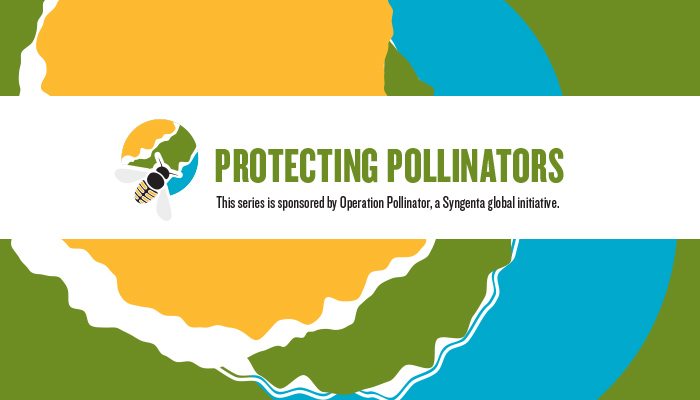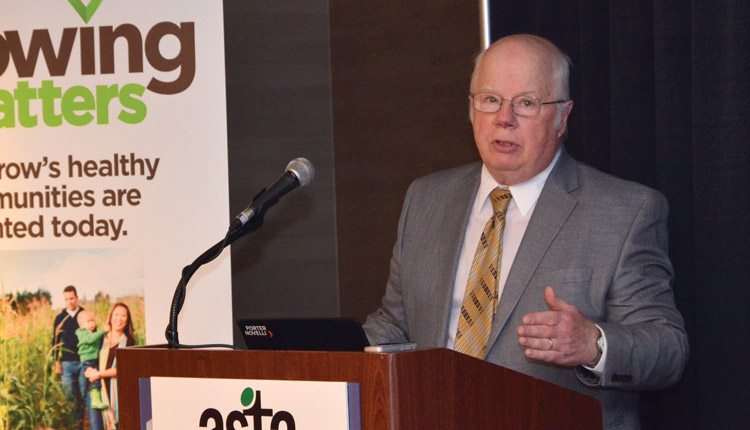Neonicotinoids prove their value compared to other systems.
In a world without neonicotinoid seed treatments, agriculture would look quite different.
Entire production strategies for corn, cotton, soybeans and sorghum are built around early planting made possible by the use of seed treatments.
“Loss of these seed treatments would require significant changes in those production strategies, including substituting products and treatment times that would cost more,” says Ray McAllister, senior director of regulatory policy for CropLife America. “Consequently, planting later would reduce season-long yield.”
Values and Yield
“For one thing, costs would go up significantly,” says Palle Pedersen, Syngenta Seedcare head of product marketing. He cites a recent study — The Value of Neonicotinoids in North American Agriculture: Estimated Impact of Neonicotinoid Insecticides on Pest Management Practices and Costs for U.S. Corn, Soybean, Wheat, Cotton and Sorghum Farmers — that found removing and replacing neonicotinoids as part of the nation’s overall pest management toolkit would cost U.S. farmers around $850 million per year.
Soybeans, in particular, are an important crop to consider.
AgInfomatics, an agriculture research firm, studied the effects of neonicotinoids in soybeans using a triangulated data system of more than 400 field studies, 500 farmer survey responses and data from insecticide treatment plans.
Their goal was to place a monetary value on the use of neonicotinoid seed treatments, says Pete Nowak, Emeritus professor at the University of Wisconsin, Madison, and AgInfomatics principal.
Overall, their research determined that farmers who use neonicotinoids seed treatments received an $11.23 per acre advantage for the 2013-2014 growing seasons. Commodity prices have shifted since then, but the difference is clear.
Some seed treatments also include a growth agent that encourages better yields, but even treatments without this additive have a positive effect on yield.
“When you use a neonicotinoid treated seed, there is also a yield enhancement, and the leading idea behind this is that the treatment is so effective at keeping pests away, the young plant has much more vigor and develops into a healthier, better-producing plant,” Nowak says.
The specific yield increase varies by region, but overall, it’s an average of 3 percent across the entire United States, according to Nowak.
“That yield increase is on top of the value advantage in input costs,” he adds.
Time is money, too, so they say, and with seed treatments, convenience and immediate efficacy are also key benefits.
The seed treatment chemical moves into the plant immediately as the seedling starts to grow and protection begins from day one, protecting the seed itself from maggots or wire worms before germination.
Ray Knake, of Ray Knake Consulting, started working with seed treatment science in 1975 and has seen the complete transition from the old system to the new one.
“You have to be out scouting for damage constantly, and then you begin treatment after the first signs. By then, it’s too late and yields may already be reduced,” Knake says.
Add in weather delays, and a crop could be severely impacted.
“It’s hard to get those spray applications done in a timely manner. You can’t spray when it’s raining or windy, and that’s tricky in the spring,” he says.
Pedersen agrees. “Foliar application’s efficacy may be dependent on environmental conditions. Seed treatments are in the plant itself, so it doesn’t matter if it’s hot or cold or windy or rainy. It’s going to work,” he says.
Chemical Volumes
Providing a targeted approach also means fewer chemicals are needed per acre.
For soybeans, depending on the product and application, the amount of active ingredient used per acre could be 60 percent less when compared to a foliar application, according to an example provided by Pedersen.
“With a seed treatment, you’re only talking about using one-third of an ounce, or 10.5 grams, per acre. That’s why farmers love these products — they are so accurate and so precise,” he says.
For corn, the difference is even more noticeable since a foliar product must be used with a granular product to get similar efficacy, increasing chemical volumes, and application costs, even more.
Safety and pollinator health
Increased safety is also significant. Humans, animals and beneficial insects, such as honeybees, benefit.
The U.S. Environmental Protection Agency is completing risk assessments for neonics, such as imidacloprid. Final results are not yet available, but an agency spokesperson says risk mitigation will be proposed if, and where appropriate.
“Runoff of pesticide from the planting of treated seeds is usually reduced compared to foliar or soil applications, in part because overall application rates for seed treatments are usually lower and because seeds are in the soil,” reports the spokesperson, noting that concern for birds or mammals who eat treated seeds could be of greater concern.
In addition, exposure to residues in the plant would generally be less from treated seed than from a foliar treatment.
“Data show that residues of one neonicotinoid, imidacloprid, in the pollen and nectar of seed treated crops are lower than residues from foliar and soil applications to those same crops,” according to the EPA spokesperson.
“Only pests who bite into the seed or the plant itself are going to be impacted,” Nowak agrees.
A few beekill incidents involving treated seed have been reported but were related to pesticide dust released during planting. EPA recommends treated seeds be planted consistent with the EPA-approved label, using best management practices. If instructions are followed, the potential for exposure is limited.
“Remember, once treated, that seed goes in the ground, so accidental exposure to pollinators is very unlikely. We aren’t dealing with wind or dust or drift or any of those concerns if the seed is in the ground,” Pedersen says.
McAllister agrees that a targeted approach is safer, both for humans and for beneficial insects.
“The potential for environmental and handler exposure is much less for seed treatment than for corresponding foliar treatments that would be targeted against the same pest problems,” he says.
This targeted application also guards against pesticide resistance, a growing concern.
“We’re trying to avoid that build up in the system and looking for sustainability by keeping beneficial insects around and reducing over-exposure,” Nowak says.
Other environmental effects to consider include increased carbon emissions and fuel consumption. Foliar applications require farmers to drive across the field more times, not only when applying the treatment, but also for routine checks before application begins.
An Essential Element
Seed treatments are an important part of an overall pest management plan. They aren’t a total replacement for other insecticide applications. Pedersen says farmers need a variety of options in their arsenal.
“Seed treatments are only intended for early-season protection against pests and diseases–the critical first four to six weeks to help seeds and seedlings get off to a healthy start,” he says.
Late-season infestations can only be treated with foliar products.
McAllister agrees foliar applications of other insecticides help handle pests that are not susceptible to seed treatments, as well as pest problems occurring later in the season; however, seed treatments could make later season issues less severe.
“Early season protection by a seed treatment gives the crop a healthy head start and increases its tolerance to pest attacks coming later,” he says.
Overall, it’s hard to imagine a world without neonicotinoids now that farmers have come to depend on their many benefits.
With the world’s population growth expected to increase food production needs by nearly 70 percent by the year 2050, perfecting agricultural practices while managing environmental impacts is key, and seed treatments play an important role in those efforts.














